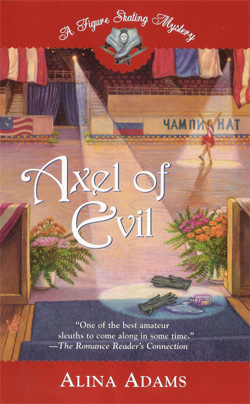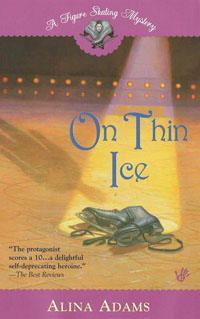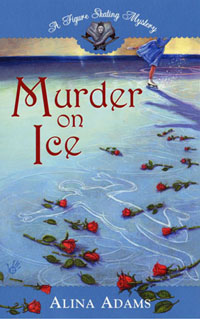LIGHTS, CAMERA, AXEL (PART #2)
One significant TV-inspired reorganization took place in the early 1970s, thanks to five-time U.S. Ladies' Champion Janet Lynn (who earlier, triggered a much smaller effect when her comment at the 1968 Olympics that what she missed about home was McDonald's hamburgers inspired the company to send enough burgers for every U.S. athlete, and, eight years later, become the Games' sponsor).
In 1972, when Lynn competed at her second Olympics, compulsory figures counted sixty percent of a skater's score, the free skating forty percent. Janet Lynn was a brilliant jumper and spinner. And a mediocre tracer of figures.
Her closest competitor, 1972 Olympic Champion Beatrix "Trixie" Schuba of Austria, was a lethargic free-styler. And arguably the greatest figure skater the world had ever seen. By the time the televised portion of the event, the free-skating, rolled around, Trixie was usually so far ahead, all she had to do was remain alive to capture the title. Viewers at home, however, could not understand why Trixie was the winner, when Janet Lynn had skated so enchantingly only moments earlier.
As a result, following the 1972 Olympics, a Short Program, worth twenty percent of the score, was added to all skating contests, and the value of figures was reduced, making the final tally: Figures 30%, Freestyle (combined Short and Long Programs) 70%. Over the next eighteen years, as skating grew in popularity, television viewers complained that figures were dull. So, by 1990, the figures were tossed.
Meg Streeter, who has directed skating for FOX, ABC, USA, A&E, UPN, and Turner, and still mourns the loss of compulsory figures, does believe that their elimination provided one benefit. She asserts, "The elimination of figures (made) judging get better. In the old days, if judges wanted someone in particular to win, since figures were the first event out, they could inflate their scores, and the audience would never see it. Because the audience wasn't watching, things could happen that nobody knew about. But, by televising an event you have more feedback as to how the judging goes. When you have a decision that people complain about around the world, it's going to have an impact. Now, judging has improved a great deal. It's more reflective of what's really happening."
Concurs Wilson, "Skating changed because of the size of the audience witnessing it."
By pointing its inquisitive eye onto the sport, television not only increased skating's popularity, it changed the very nature and rules of the game. Figures were just the tip of the iceberg...
(TO BE CONTINUED TUESDAY, NOVEMBER 29, 2005)
In 1972, when Lynn competed at her second Olympics, compulsory figures counted sixty percent of a skater's score, the free skating forty percent. Janet Lynn was a brilliant jumper and spinner. And a mediocre tracer of figures.
Her closest competitor, 1972 Olympic Champion Beatrix "Trixie" Schuba of Austria, was a lethargic free-styler. And arguably the greatest figure skater the world had ever seen. By the time the televised portion of the event, the free-skating, rolled around, Trixie was usually so far ahead, all she had to do was remain alive to capture the title. Viewers at home, however, could not understand why Trixie was the winner, when Janet Lynn had skated so enchantingly only moments earlier.
As a result, following the 1972 Olympics, a Short Program, worth twenty percent of the score, was added to all skating contests, and the value of figures was reduced, making the final tally: Figures 30%, Freestyle (combined Short and Long Programs) 70%. Over the next eighteen years, as skating grew in popularity, television viewers complained that figures were dull. So, by 1990, the figures were tossed.
Meg Streeter, who has directed skating for FOX, ABC, USA, A&E, UPN, and Turner, and still mourns the loss of compulsory figures, does believe that their elimination provided one benefit. She asserts, "The elimination of figures (made) judging get better. In the old days, if judges wanted someone in particular to win, since figures were the first event out, they could inflate their scores, and the audience would never see it. Because the audience wasn't watching, things could happen that nobody knew about. But, by televising an event you have more feedback as to how the judging goes. When you have a decision that people complain about around the world, it's going to have an impact. Now, judging has improved a great deal. It's more reflective of what's really happening."
Concurs Wilson, "Skating changed because of the size of the audience witnessing it."
By pointing its inquisitive eye onto the sport, television not only increased skating's popularity, it changed the very nature and rules of the game. Figures were just the tip of the iceberg...
(TO BE CONTINUED TUESDAY, NOVEMBER 29, 2005)






0 Comments:
Post a Comment
Links to this post:
Create a Link
<< Home